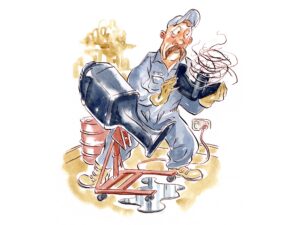
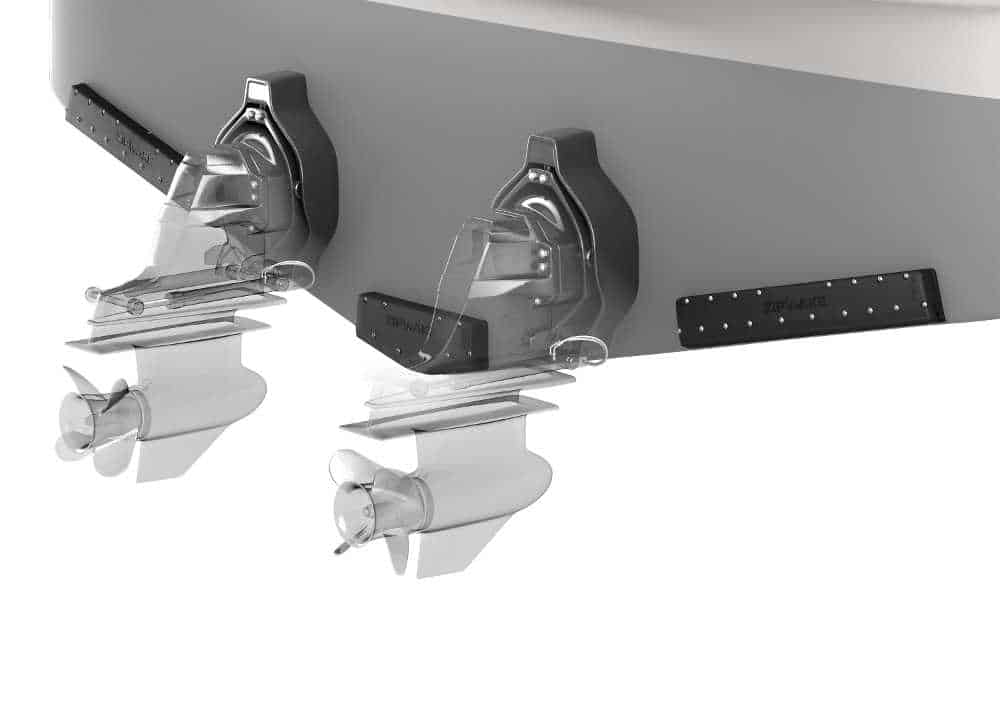
We’ve seen trim tabs in action on boats; what’s an interceptor?
In the world of boats, an interceptor is usually a small vertical plate that’s set on the bottom edge of the boat’s stern or transom.
The plate creates additional lifting pressure beneath the boat, and in the case of mechanical interceptors, the plate can be extended or retracted as needed to increase or reduce the amount of lift. There are several brands of interceptors on the market; Imtra sells the Swedish brand, Zipwake, in North America, typically for boats 20 to 60 feet long.
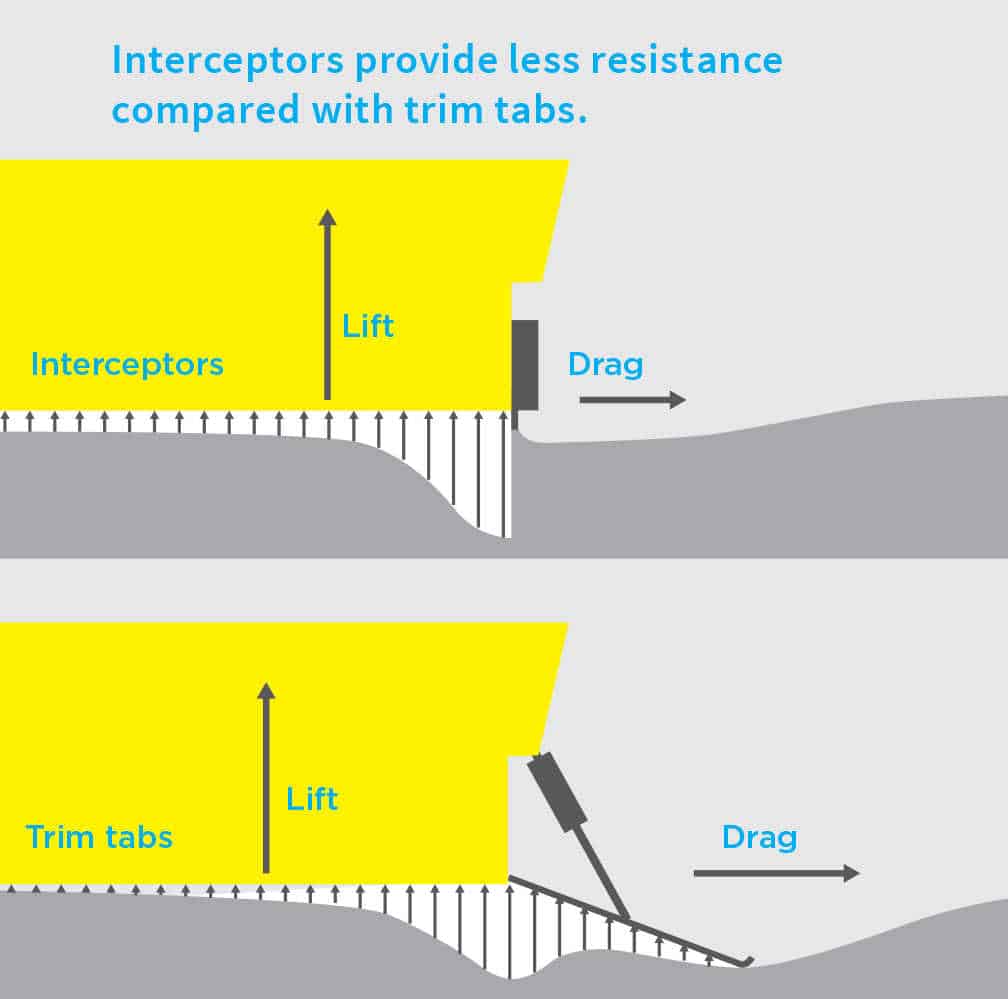
How much do interceptors help any boat increase both fuel economy and speed?
Once a boat is planing, interceptors like those made by Zipwake improve both fuel efficiency and speed, mainly by creating the needed lift for the boat to run at a proper trim attitude for a given rpm engine speed. The small amount of blade that a Zipwake Interceptor utilizes creates much less drag than the stern-down, bow-up form of the same boat without interceptors. As noted in the image above, the drag is also less than the drag of a pair of trim tabs.
These graphs provide the data to show how well Zipwake interceptors work in both respects on two very different production models. On the smaller boat, a 20-foot Flipper 605WA, speeds with the engine running 2500 to 3500 rpm are up to a knot faster. Fuel consumption is dramatically better, especially in the 2500 to 3000 rpm range. The graph of comparative pitch angles explains why.
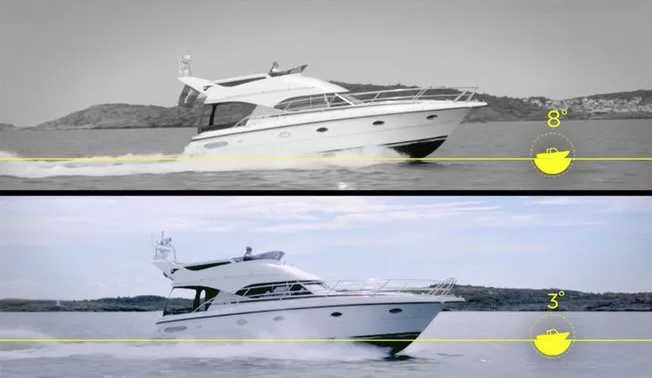
On the 42-foot Nordwest 420 Flybridge model, which has an engine running at a lower rpm generally, the greatest difference in speed is again about 1 knot, between 2250 and 3000 rpm. Fuel economy shows most improvement from 2000 to 2750 rpm. And pitch angle is always improved, but never more so than in the 2000 to 3000 rpm range.
It’s worth noting that the greatest difference, especially in fuel economy, will be seen on boats that frequently speed up, slow down and speed up again. Boats that are run at consistent speeds will experience less of a difference.
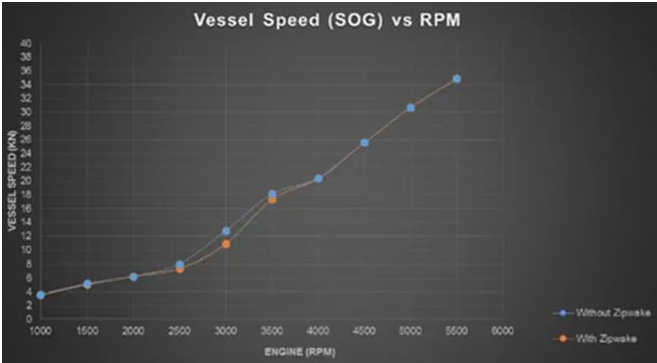
Why do interceptors like those by Zipwake work better than trim tabs to automatically control roll?
Zipwake interceptors can be adjusted at a fine increment, but they also move quickly from fully retracted to fully extended-in 1.5 seconds. That’s at least four to five times faster than trim tabs, which typically take 6 to 8 seconds. Add in the fact that a small increment of interceptor will generate a large amount of lift, and the system can react quickly enough to offset the varying period of different size and shape waves. Some trim-tab systems attempt to control roll; in tests conducted by Imtra, trim-tab systems may work in a long swell but can’t keep up in a shorter, steeper chop.
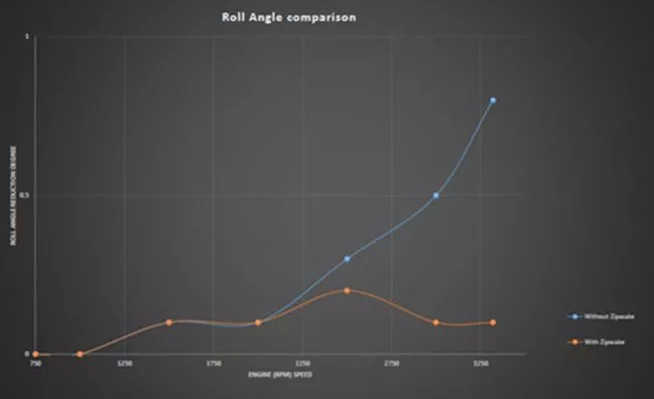
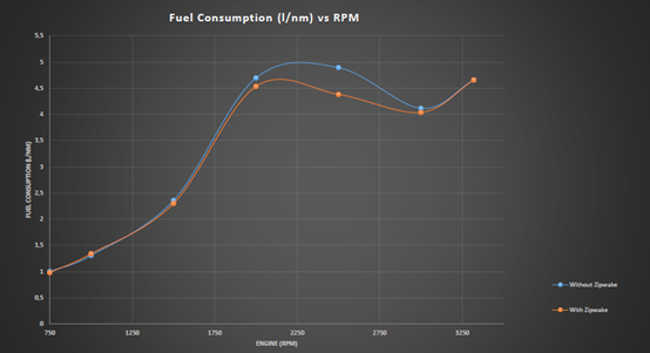
Interceptors depend on a strong waterflow, so they are more effective at higher speeds. That’s why they are designed mainly for planing and semi-planing hulls. The adjacent graph shows little difference in roll angle at lower speeds aboard a Nordwest 420 Flybridge, but at 2250 rpm and above, the difference becomes significant.




